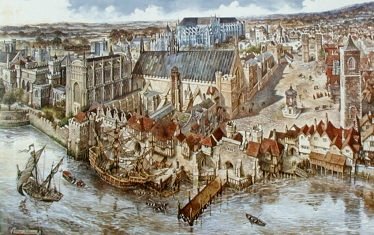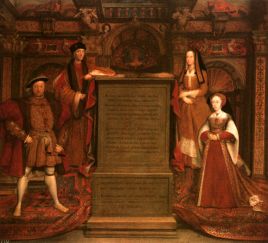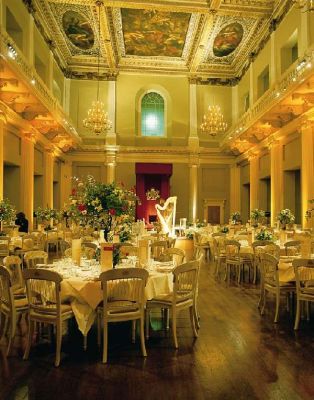Whitehall Palace
Jump to navigation
Jump to search
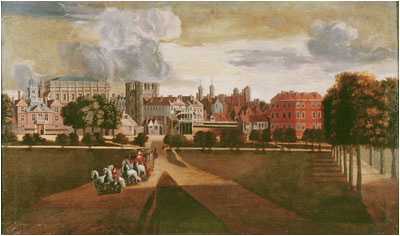 | Henry VIII married two of his wives at this palace — Anne Boleyn in 1533 and Jane Seymour in 1536. It was also at the palace that the King died in January 1547. --Upon Thomas Wolsey's downfall in 1529, Henry acquired York Place which was subsquently rebuilt as the Palace of Whitehall. The building work was a joint project between Henry VIII and Anne Boleyn who planned the palace to be their future marital home. Anne's coronation feasts and jousts were held at the palace in 1533 by which point serious building work had commenced on the site. By 1536 an act of parliament gave the palace the official status as the king's chief residence. There were 1500 rooms and around 3 million sq ft. It was the size of a small town. |
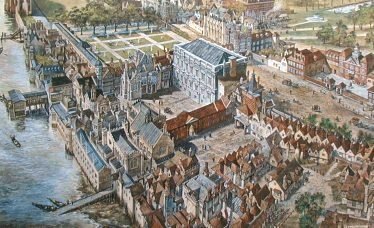 | Overall Whitehall covered over twenty-three acres and on the western side of the palace it housed the largest recreation centre of any Tudor palace. The palace also included four tennis courts, two bowling-alleys, a cockpit, a pheasant-yard and a gallery for viewing tournaments. Throughout Henry's lifetime the palace was filled with treasures; after his death it took eighteenth months to catalogue all his goods. |
| Interesting Simon Thurley in his work on the Tudor palaces (he features in the video clip in the links section below) noted that Anne Boleyn was almost certainly the only wife of Henry VIII with a particular interest in architecture, which she shared with her husband. Building plans for Whitehall were sent to Henry and Anne for approval and interestingly Henry allowed her a significant say in decorations. Unfortunately for Anne, she never lived to see the building work completed. | |
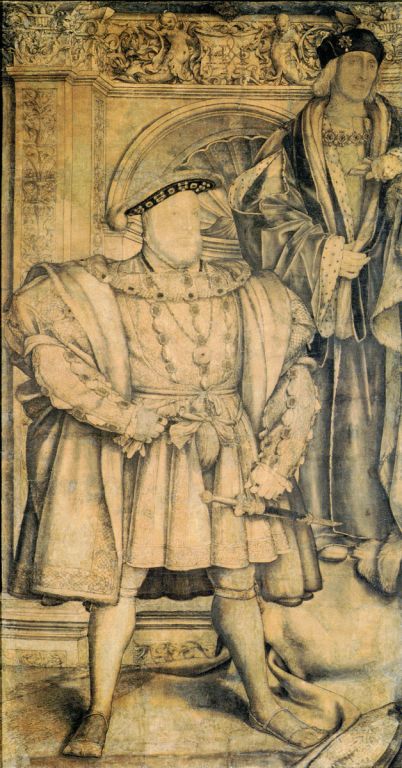 | Whitehall Palace was also were Henry VIII died on 28th January 1547. His entrails were buried in the Chapel Royal there, and his body lay in state in the Privy Chamber. The same room housed the famous Whitehall Mural by Hans Holbein, which depicted life-size images of Henry VIII, Jane Seymour, Henry VII and Elizabeth of York. This was the iconic representation of Henry VIII which spawned nearly every other portrait painted of him since, and the image with which we still identify him. It was a great loss to both art and history when the mural perished in the fire which destroyed most of Whitehall Palace in 1698. The story has it that a maid had left laundry to dry in front of a fire. Fortunately, King Charles II had commissioned the Flemish painter Remigius van Leemput to make a copy of the mural in 1667. Leemput's copy is now a part of the Queen's collection at Hampton Court Palace. Half of the original cartoon (a full-sized drawing on paper with holes punched in it, through which the artist could trace the outline onto the wall) also survives and is housed at the National Portrait Gallery in London. |
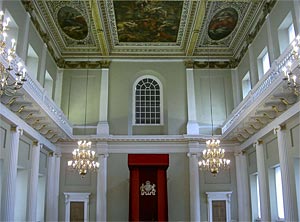 Banqueting House ceiling | By 1691, the palace had become the largest and most complex in Europe. A fire broke out which destroyed most of the older palace structures. This actually gave a greater cohesiveness to the complex. However a second fire on 4 January 1698 destroyed most of the remaining residential and government buildings. Despite some rebuilding, financial constraints prevented large scale reconstruction. In the second half of the eighteenth century, much of the site was leased for the construction of town houses. |
Banqueting House is the only integral building of the complex now standing, although it has been somewhat modified. Various other parts of the old palace still exist, often incorporated into new buildings in the Whitehall government complex. These include a tower and other parts of the former covered tennis courts from the time of Henry VIII, built into the Old Treasury and Cabinet Office at 70 Whitehall. Beginning in 1938, the east side of the site was redeveloped with the building now housing the Ministry of Defence. | |
LINKS:
| LITERATURE: |

